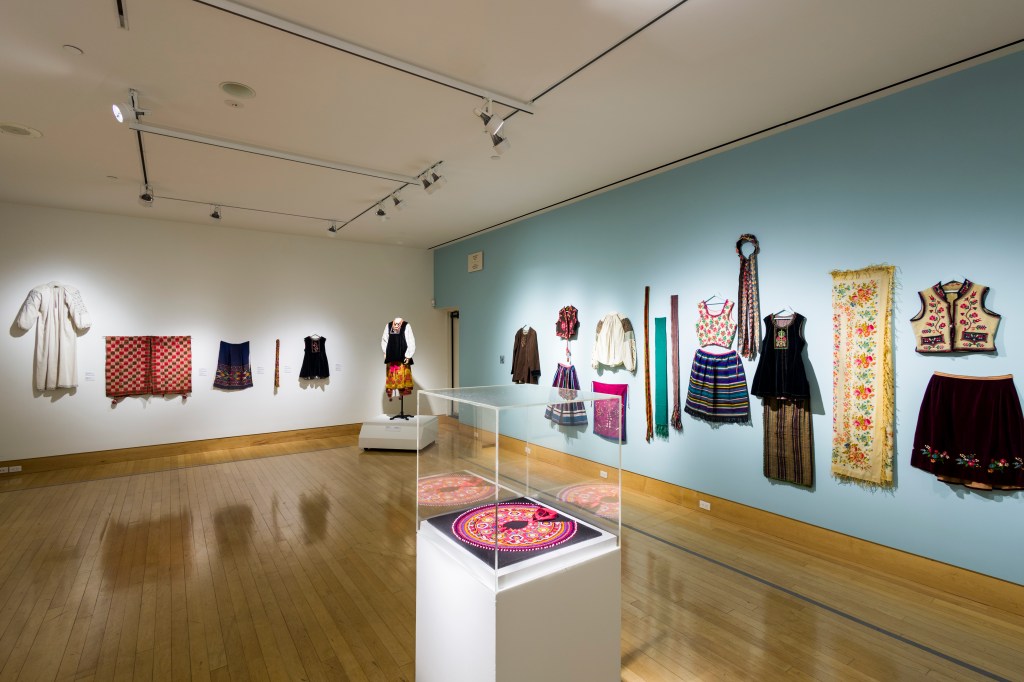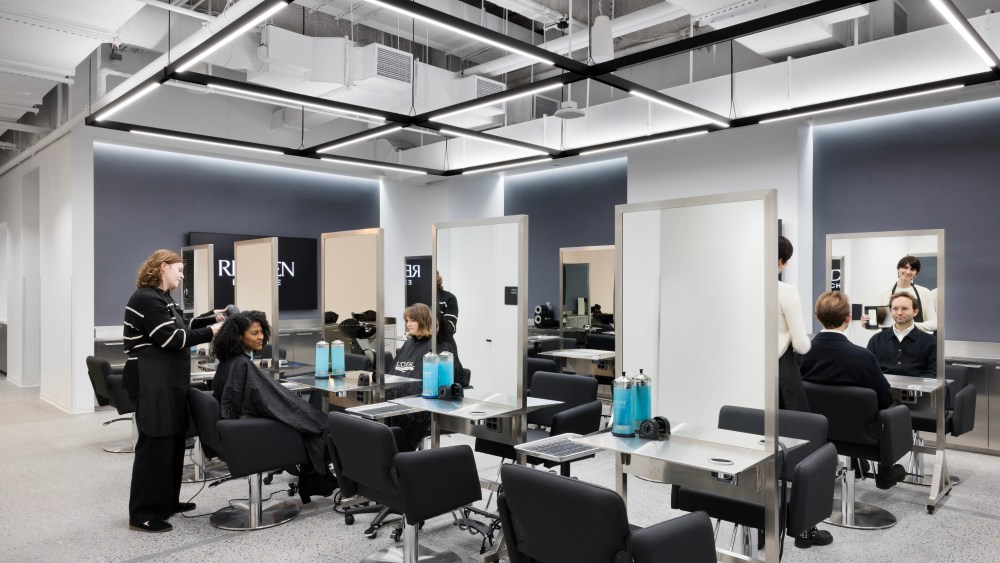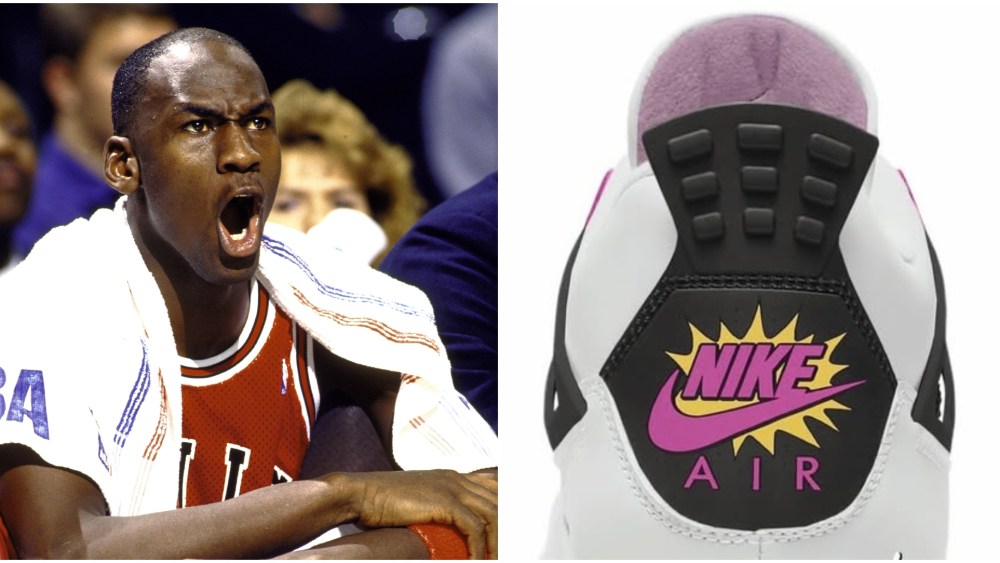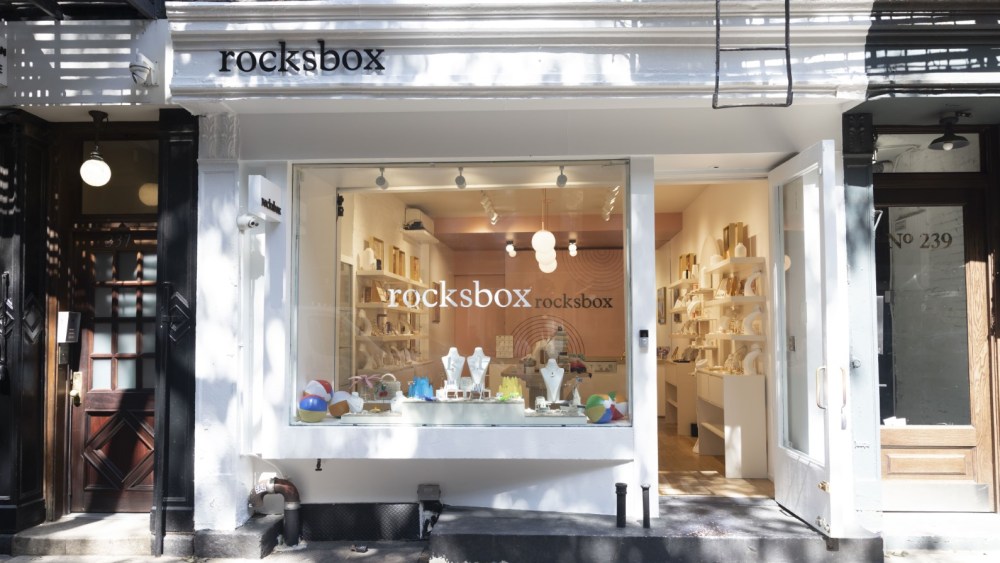NEW YORK — The Ukrainian Museum in New York City recruited Helena Christensen to curate “Wearloom: Ukrainian Garments.”
The show highlights the stylistic complexities and craftsmanship of the country’s many regions such as Poltava, Hutsul, Bukovyna, Polisia, Volyn and Lviv. There are also traditional costumes from the Poltava and Carpathian (Hutsul) regions and a selection of traditional headdresses, jewelry, sashes and other accessories. Visitors will be enlightened about ritualistic dressing for specific occasions.
But instead of a strict look back, it accentuates the aesthetics of embroidered and historic garments and accessories from a modern female perspective. Ukraine’s First Lady Olena Zelenska seems to be of a similar mindset, having periodically worn Ukrainian-designed styles with historic or folkloric references. The exhibition will be on view through Jan. 17 in the 46-year-old East Village Museum.
How a Danish-born model and photographer wound up curating a Ukrainian exhibition is a tale into itself, but one that is more synthesized than expected. Not the type to map out future plans in order that life and work will unfold more organically, Christensen spoke enthusiastically about her latest undertaking and how patrons can view the exhibition from a current standpoint. On a more somber note, the ambassador to the United Nations High Commission for Refugees addressed the exhibition’s relevance, given the ongoing war in Ukraine.
Christensen was approached by the museum’s director Peter Doroshenko, who had been tipped off by one of her Ukrainian friends that she might be a good candidate due to her love for historical garment pieces, anything antique, vintage, and old embroidery, and above all, history. Her “little bit of a connection to the fashion world” may have been a factor, she said. “Very honored” to be asked to serve as a guest curator, she accepted “with excitement.”
In addition to her interest in old embroidery and textiles, her mother has owned and run a vintage store in Copenhagen for years. The model and a Danish friend also had a boutique in Abington Square in the West Village specializing in Scandinavian objects, designer clothing, antiques and vintage clothing in the mid-1990s. “My friend moved back to Denmark and opened a store there instead. So it took off and left me with it. But it was such a gorgeous little store,” she said. “What’s really special is that I still have people stop me in the street [in New York] and they tell me how they miss it.”
Curating the pieces for the show was a thorough process with Christensen spending hours on end in the museum’s subterranean vaultlike space, where all of the historical garments are conserved in hundreds of boxes. For six months or so she spent afternoons in the basement considering all of the options.
Many of the featured pieces are from the late 19th and early 20th centuries. “The colors are so vivid. I don’t even know how they have survived. When you think about how clothes today just get turned over and ruined, that speaks to how well-made garment pieces used to be and how long you could keep them and pass them on. They are still here. Today we go through clothing too fast. There’s too much production and too much waste.”

Given that, the project makes one understand the importance of the loss of pieces of history and how integral preservation is, as well as the need to recycle clothing, take better care of our clothes, and buy less products, as well as quality ones, according to the guest curator. “These clothes that we’re showing have been worn by so many different women. There’s something so beautiful in spending time in a certain piece and then passing it on to someone else,” she said. “There are so many different stories embedded in the fabric.”
Narrowing down the selection was difficult, because “there are so many beautiful pieces that are in impeccable condition,” she said. Trying to find a thread line (no pun intended) that ran through all the pieces to make the exhibition come together in a way that made sense was a slow process. The initial choices were then laid out for the final curation and then Christensen had to determine how to hang it, before installing it the day before the exhibition debuted.
Her affinity for that style of dress eliminates any chance of naming a favorite element. “Literally, it’s my dream wardrobe. I have pieces like that in my wardrobe. They are so me. They speak to me. If a piece is a projection or extension of your personality, mine would be original folk costumes almost from any part of the world,” said Christensen, who mentioned that in her mother’s homeland of Peru, such attire has been worn for hundreds of years. “That is so much a part of my history and the Ukrainian way of dressing.”

Having made another visit to the exhibition last week, she was wowed again by the craftsmanship, stitching, embroidered colorful flowers and intricate lace. Admiring each garment, she imagined the woman or girl might have worn them in a meadow or in the mountains, as well as what her dreams and thoughts might have been wearing the pieces. “It’s literally like the inside of my brain — it looks like that. Every piece is a poem.”
For an added sense of life, randomness and realness, many items are hung on the walls, which were painted eggshell blue. Christensen even persuaded the team to paint the hangers the same shade and to unscrew each hook afterward so they appear to be floating. She plans to visit the museum again next month when her mother visits New York for the first time without her father, who passed away over the summer.

Another exhibition at the museum that showcases the boldly colored work of the late Ukrainian artist Maria Prymachenko dovetailed serendipitously with “Wearloom: Ukrainian Garments,” Christensen said. However, curating her own project was a profound experience on many levels, and one that evoked a certain melancholy, given the ongoing Russian invasion of Ukraine. As a nine-year ambassador for the United Nations High Commissioner for Refugees, she visited Ukraine in 2016 and received such a warm embrace from refugees, who were primarily elderly and were dressed in customary layering pieces. They were still trying to overcome the previous war, as well as the damage that was done to their homes and physical injuries. “Now they’re living through the nightmare again,” Christensen said.
As for how the exhibition will serve as a reminder of the war in Ukraine, she said visitors feel as though they get to know the people behind the garments and their talent, warmth and spirit live on in the garment pieces.
“It’s just a testament to the craftsmanship of each piece and it tells the story of a human being, who is so full of love and talent, as well as the destruction of a people at the same time. It speaks to the pointlessness and the darkness of war. There is a lot of sadness attached to it and how grim the reality is, especially in relation to past times and how we haven’t learned anything. Humankind just continues fighting each other,” she said.
Michael Westermeyer suggested such exhibits could open up people to a wider understanding of the country. “The fact is that Ukraine is not a wasteland of twisted metal, dead bodies and mass graves. It’s beautiful. Even the [national] flag is blue and yellow for a reason. It is the bluest sky that I have ever seen in my life and I don’t say that with any kind of conceit. You will find fields of wheat and sunflowers that sometimes go on farther than the horizon,” he said.
“This helps me understand that the folk art is very representative of so many places in the world,” said Danielle Reydon, a freelance nonprofit consultant. “It personalizes people that we often see as monoliths or victims. It’s a much larger experience that people from any colonized or imperialized nation can really connect with. It’s important to show not just the war. It’s the people, their ouput and traditions that is the most critical part of their personhood and not the things that are happening to them.”
In addition to curating the exhibit, Christensen continues to model and do her own photography. Earlier this year she traveled to Colombia with the UNHCR. Next up will be the March release by a Danish publisher of a book about Christensen’s and her friend Camilla Staerk’s “visual universe.” Through their company Staerk & Christensen, the duo is also polishing up three prefab structures that they have been developing for eight years with an architect. ls It is expected to be released next year.
Her tips for Ukrainian Museum New York goers is be sure to hit its two gift shops (where she stocked up on holiday presents) and the nearby vintage store Honeymoon. Heading for Copenhagen for a weeklong holiday stay, the former Miss Universe Denmark plans to jump in the icy harbor daily including on her birthday, which is on Christmas. The water’s current temperature is about 40 degrees. As in years past, she will capture that polar plunge with a video post on Instagram so that others will do the same. Encouraged that people are increasingly recognizing the upsides of cold water dousing, Christensen said, “It’s a free health benefit. You can do it in your shower or your bathtub, if you are lucky enough to have a bathtub, or in any body of water, if you live somewhere cold.”
She routinely hears from “so many other people,” who vow to follow her lead and then follow up with thanks post-plunge. “It gives me goosebumps — both the cold water bath and the people being inspired,” Christensen said.



